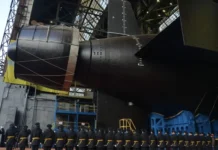
A new report from the Australian Strategic Policy Institute urges Australia and the Philippines to capitalise on their growing strategic alignment and move quickly to institutionalise bilateral defence cooperation.
The report, ‘Allies entwined Australia’s strategic convergence with the Philippines’ by Dr Euan Graham, argues that Philippines President Ferdinand Marcos Jr’s pivot towards the US alliance, amid sustained pressure from China, presents a unique opportunity to institutionalise security cooperation before his term in office ends in 2028.
Closer alignment between Canberra and Manila reflects shared threat perceptions, the report notes, as well as a wider inter-alliance “cross-bracing” trend that’s driven in part by shared doubts about the US commitment to its allies’ security.
“Australia’s defence relationship with the Philippines has evolved considerably since 2017 to become Manila’s closest security relationship after the US. In fact, Canberra is currently more closely aligned with Manila than it is with Washington,” the report states.
“It’s prudent to institutionalise the defence relationship with Australia as far as possible while the political window is wide open under Marcos.”
The report examines Australia’s strategic interests in maintaining the Philippines’ territorial integrity and friendly strategic orientation, making the case for Canberra to contribute to the country’s defence against external aggression.
It argues that Australia has a clear strategic interest in helping defend the Philippines, consistent with its shared objective with Washington to prevent China’s domination of the First Island Chain and the broader Indo-Pacific. The Philippines’ proximity to Taiwan also gives Australian force deployments there additional utility for planning in case of a cross-strait crisis or conflict.
While acknowledging that such a contribution would entail additional strategic risk for Canberra, given that it could draw the Australian Defence Force into a US–China conflict, the report contends that it remains in Australia’s national interest to do so, “as part of an international coalition, in defence of the regional order and a democracy under direct threat.”
The report also highlights Exercise Alon 2025, the second joint exercise between Australia and the Philippines, as evidence of the growing depth and ambition of the defence relationship.
Its success, Dr Graham explains, should signal reassurance to Manila, deterrence to China and a message to Washington that two key regional allies are strengthening their collective ability to respond to shared threats, close to where China’s contestation is playing out in the First Island Chain.
The study identifies several key priorities for both governments to further strengthen defence ties, including upgrading the existing memorandum of understanding on defence cooperation to an executive-level agreement, signed by the two heads of government in 2026.
It also recommends pre-positioning Australian defence equipment and stores in the Philippines to support future exercises and contingency operations, expanding the scope of joint military activities such as Exercise Alon and adding new areas of cooperation in defence health and military medicine to boost resilience.
Other recommendations include closer coordination among all four ‘Squad countries’ — Australia, Japan, the Philippines and the United States— to harmonise logistics, cross-servicing and visiting forces agreements.



